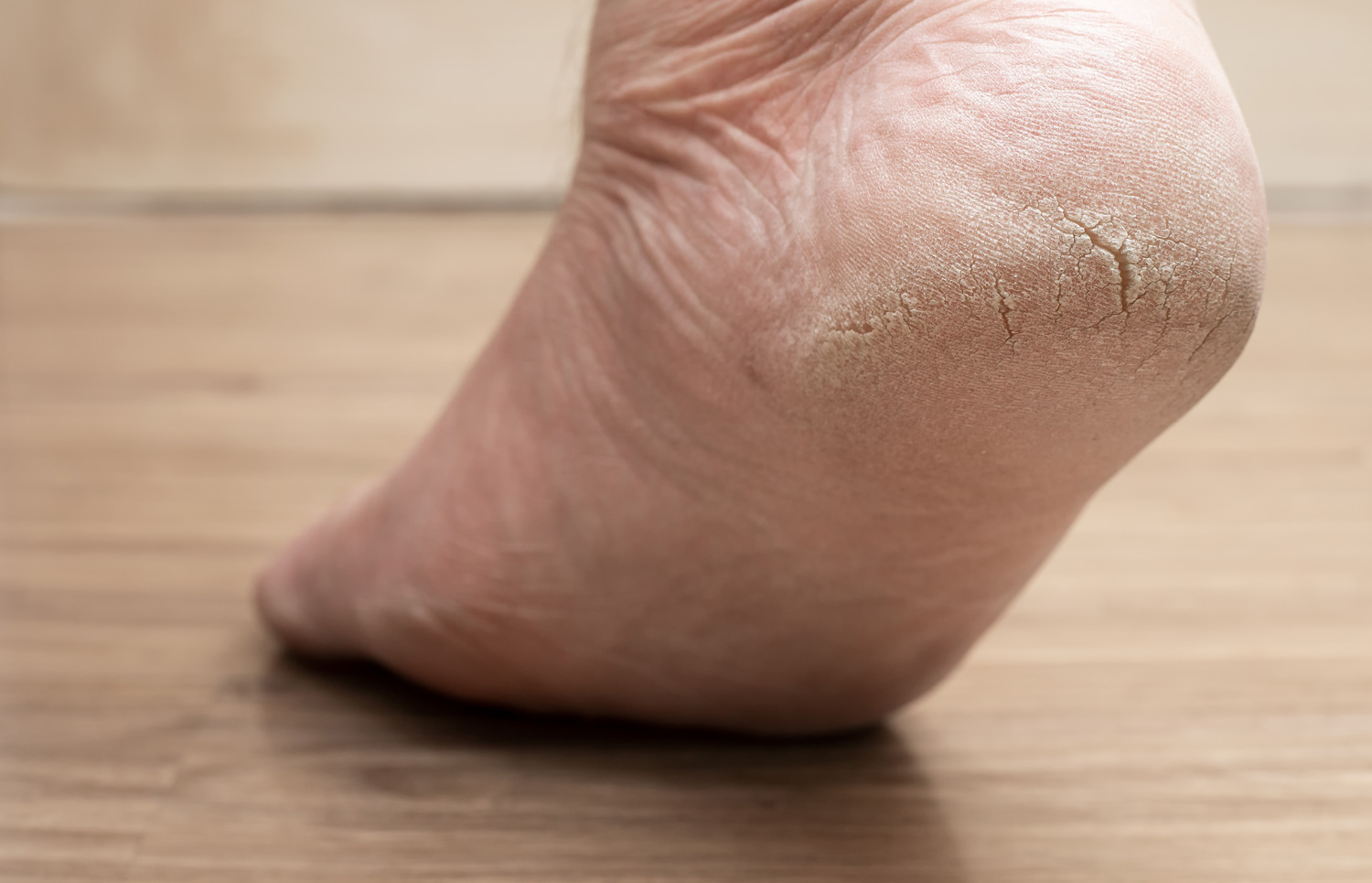At first glance, those unsightly cracks in your foot may simply be written off as an annoyance. However, the small breaks in your skin can escalate and result in future problems in your foot.
What Is a Foot Fissure?
Deep foot fissures occur when the skin on the bottom of your heel becomes hard and calloused this can result in the skin becoming very dry and cracked. The cracks turn into deep fissures that are very painful and can bleed.
Causes and Symptoms of Foot Fissures
Foot fissures can happen to anyone, but some patients may be more at risk.
Large fissures often form at the base of the heel. They tend to happen when the skin is too dry or too moist. When the skin is too dry, it can become rough and flaky, resulting in cracks. When the skin is too moist, you may get a bacterial or fungal infection that can cause cracks between your toes.
Patients who often walk barefoot or wear open-toed shoes are more prone to foot fissures. This is because walking barefoot can strip your skin of its natural oil. Without these oils, there’s no protection from the elements and cracks can quickly develop.
On the other hand, moist skin can result in fissures as well. Chronically moist or sweaty can result in bacteria and fungus growth which weakens your skin and leads to cracks.
It’s quite easy to visually identify fissures on your feet. However, it’s more difficult to know the cause of your fissures.
Symptoms of fissures caused by dry feet:
- Rough, dry skin
- Ashy skin
- Deep, painful cracks
- Flaking and peeling
- Scaly skin
Symptoms of fissures caused by overly moist feet.
- Blisters
- Bad Odor
- Swelling
- Discolorations
- Weakened skin
Treatment for Deep Foot Fissure
The treatment for your foot fissures depends on the severity and depth of the openings. Your doctor may recommend that you begin to regularly moisturize and exfoliate your feet. This will help to decrease the thickness and roughness of the skin.
Avoid exposing your feet to the elements and opt for closed-toed, breathable shoes to protect your feet. If you tend to have moist, sweaty feet, consider asking your doctor about the use of an antifungal powder or foot antiperspirant.
Make it a habit to check your foot daily for redness and swelling, and see a doctor if the cracks deepen or worsen.
Contact Canyon Oaks Foot & Ankle For Treatment
If you’ve been suffering from deep and painful heel fissures, you should seek treatment as soon as possible. If your fissures are causing your skin to feel raw and bleed, you may be at risk for more serious infections.
To find out what you can do about your painful heel fissures, visit your local Canyon Oaks Podiatry office. Our doctors are ready to answer your questions and help create a plan of treatment to get your back on your feet.
You can call to make an appointment or fill out our online contact form. A member of our team will be in touch to schedule your first visit.

